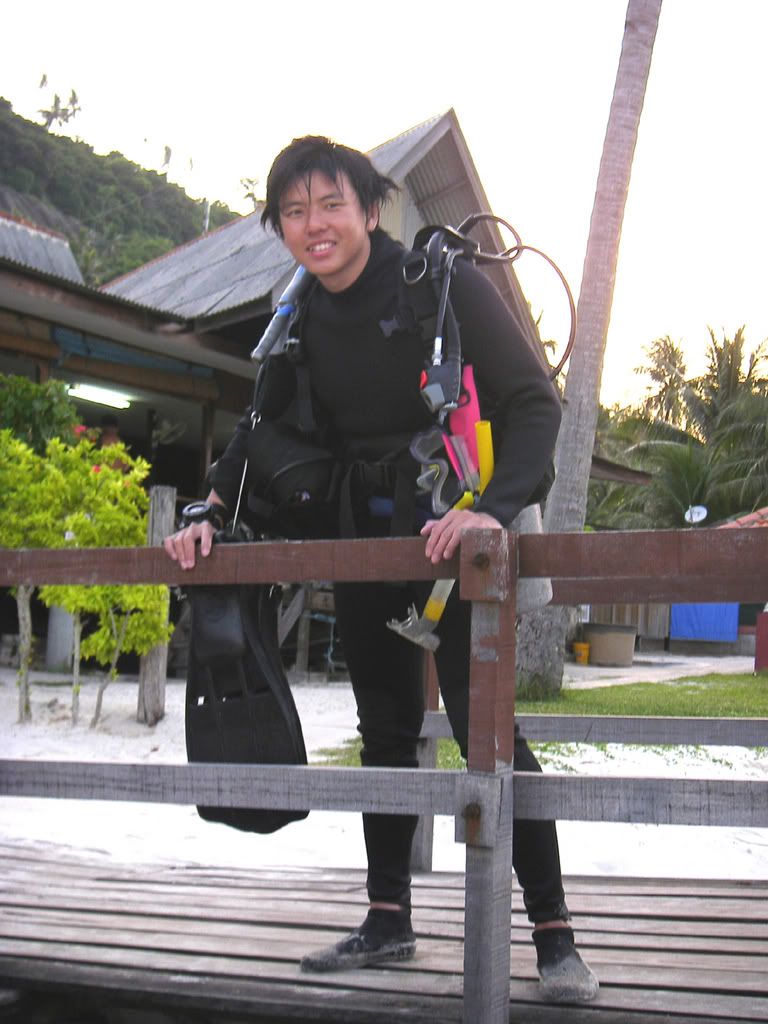Introduction:
On 15 Nov 2007, a group of students from NUS embarked on an adventure into an undisclosed forest to conduct a field study on pitcher plants (Nepenthes Spp.). Though this, the group achieved the following agendas:
1. Understanding if there is any difference in the trapping successes of preys for pitchers in shaded areas and pitchers found in unshaded areas.
2. Found 3 species of pitcher plants within the forest.
Setting out
The expedition began with the transport bringing the group to the forest where pitcher plants are known to thrive. Upon reaching he edge of the forest, the expedition group had to continue the expedition by foot into the forest trails in search for the forest patch.
Just within minutes into the forest, the group began to notice pitchers sparsely scattered on the undergrowth layer of the forest- most dominant species being the Nepenthes gracillis.
 As the group ventured deeper into the trial, they found themselves surrounded by pitchers of species Nepenthes gracillis!
As the group ventured deeper into the trial, they found themselves surrounded by pitchers of species Nepenthes gracillis! Pitchers were found on the ground, as well as hanging a few meters above ground; in shady areas, as well as areas which are unshaded; along the trails as well as in the forest patch!
In short, pitchers were found everywhere!
First objective!
At this point, the curious group began to wonder if pitcher plants under shade share similar prey trapping successes as pitcher plants found in unshaded areas?
As such, the inquisitive group decided to conduct a short study to test if there is a significant difference in the number of preys in the pitchers between pitcher plants found in shaded areas and unshaded areas. Hence, they divided into 2 smaller groups to gather datas of 15 pitchers each from 2 plots of the forest, one shaded and another unshaded. Diameter of peristomes and the pitcher's length were measured.
The amount of prey ensnared in the pitchers were counted as well. This was done by pouring the liquid contents on a petri dish before visually counting it.
Apart from finding dead ants in the liquid, live animals were found as well! There were live mosquito larvae, ring worms and crab spider moults, which may indicate a mutualism relationship (maybe similiar to that of clown anenome fish and sea anenome).
The datas collected were then consolidated and statistically tested and the results showed that THERE WAS NO DIFFERENCE IN THE PREY COUNT BETWEEN PITCHERS IN SHADED AND UNSHADED AREAS.
The group moves on... and found other species!
Enlightened by the findings, the group moved on, searching for more pitchers along the forest trails.
After a short hike, the group found another species of pitcher plant- Nepenthes ampullaria. The stem was horizontally on the ground before rising vertically upwards with clusters of pitchers at intervals along the stem. It was a AWEsome sight!
Also, it was observed that the clusters of pitchers up the stem were progressively older.

Wallking further, more pitchers were spotted... Wow! This time, was the raffles pitcher plants -Nepenthes rafflesiana. Again, they stopped and took more pictures!

After some picture taking, the team was extremely satisfied with their findings of the day and decided to find their way out of the forest using a different route from which they came in by.
Tiring hike out
The walk out was indeed tiring, which was reflected by the 'half-dead' faces when they exited from the forest. However, this adventure was nevertheless a fruitful one, where everyone went home with new insights on the prey trapping behaviour of pitchers, as well as having the opportunity to see
pitchers, pitchers everywhere....

Absent: Joelle(phototaking) & Zeehan(MC)
Note: The location of the forest is undisclosed to prevent unnecessary poaching of the wonderful pitcher plants. However, please be assured that the location is somewhere in Singapore! For those who knows the forest, please swore to secrecy about the location of this enchanted forest....
Keyword:
peristomes: area around the mouth of the pitchers









3 comments:
Hi Justin...thanks for the great and concise documentation of what we did...I never knew Singapore has got such magnificient pitcher plants until this field trip. Just a few corrections...the pitcher plant that is found everywhere is called Nepenthes gracilis. The ones climbing up the vine is then called Nepenthes ampullaria. The picture you took of a big pitcher plant is also Nepenthes gracilis, but the bigger version, that's why it looks different. Nepenthes rafflesiana has a rounded and wide base at the bottom :)
Hi Elle, thanks for spotting the mistakes.. I have changed it accordingly. Hope that we can still have our night walk so will have more to blog about.
Hi Elle,
I have check and compared with some pitures of Raffles pitcher on the web, eg naked hermit crab etc. And found that what we saw was really reffles pitcher
Post a Comment